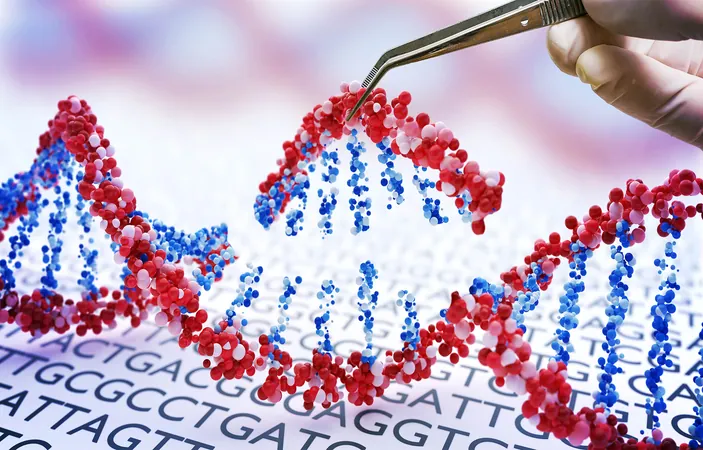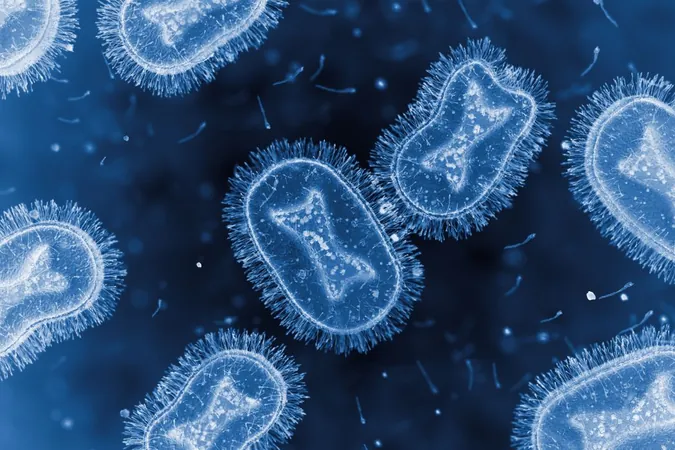
Revolutionary CRISPR Technique Paves the Way to Correct Down Syndrome Genetic Errors!
2025-06-15
Author: Jacob
A Breakthrough in Down Syndrome Research
Down syndrome, affecting an estimated 1 in 700 newborns in the U.S., is caused by an extra copy of chromosome 21, known as trisomy 21. This genetic anomaly disrupts numerous crucial bodily processes, leading to developmental challenges and potential health issues. But what if scientists could remove that extra chromosome entirely? Recent groundbreaking research suggests they might be able to.
CRISPR: The Gene-Editing Marvel
A team of researchers led by Ryotaro Hashizume from Mie University in Japan has harnessed the power of CRISPR-Cas9, the revolutionary gene-editing tool, to tackle this genetic challenge. By crafting highly targeted guides that home in on the superfluous chromosome, they successfully snipped it away from affected cells, potentially restoring them to a more typical state.
How the Method Works
This innovative technique, termed allele-specific editing, allows the CRISPR system to selectively target and remove the unwanted chromosome while leaving the healthy ones intact. Remarkably, their findings revealed that after the removal, the corrected cells exhibited behaviors similar to their non-trisomic counterparts, including normal patterns of protein production and improved survival rates.
Exciting Prospects for Neurons and More
While this therapy is not yet ready for clinical application, the implications are profound. Scientists are now contemplating whether similar edits could be applied to brain cells and other tissues, opening doors to revolutionary treatment options.
Gene Expression: A New Understanding
Post-treatment analysis showed altered gene activity; nervous system development genes became more active, while those related to metabolism decreased. This suggests that correcting the chromosomal imbalance could positively influence cellular behavior—all crucial for developmental health.
Testing Beyond the Lab
Notably, the researchers didn't stop at stem cells; they also applied their approach to skin fibroblasts—mature cells from individuals with Down syndrome. Astonishingly, they managed to remove the extra chromosome in a significant number of these more fully developed cells, pointing to the method's versatility.
Enhanced Cell Functionality
The alteration led to cells that not only grew faster but also produced fewer harmful byproducts linked to aging and cell damage. This marks a significant leap forward in understanding how to alleviate the biological stress caused by genetic overload.
Navigating the Challenges Ahead
However, as with any groundbreaking technology, challenges remain. Some CRISPR techniques can inadvertently affect healthy chromosomes, so researchers are tirelessly refining their approach to ensure precision. The goal is to develop a method that is not only effective but also safe for widespread application.
A Glimpse into the Future
Should these promising results hold in further studies, we could see a revolution in treatment designs that correct genetic disorders at their source. Although the path forward is fraught with uncertainties, the potential for CRISPR to address significant genetic issues—and perhaps even pave the way for regenerative medicine—is nothing short of exhilarating.
Conclusion
This pioneering study, published in PNAS Nexus, showcases the immense potential of CRISPR technology, hinting at a future where entire chromosomes can be effectively removed, changing the landscape of genetic editing as we know it. The journey is just beginning, and the world will be watching closely!









 Brasil (PT)
Brasil (PT)
 Canada (EN)
Canada (EN)
 Chile (ES)
Chile (ES)
 Česko (CS)
Česko (CS)
 대한민국 (KO)
대한민국 (KO)
 España (ES)
España (ES)
 France (FR)
France (FR)
 Hong Kong (EN)
Hong Kong (EN)
 Italia (IT)
Italia (IT)
 日本 (JA)
日本 (JA)
 Magyarország (HU)
Magyarország (HU)
 Norge (NO)
Norge (NO)
 Polska (PL)
Polska (PL)
 Schweiz (DE)
Schweiz (DE)
 Singapore (EN)
Singapore (EN)
 Sverige (SV)
Sverige (SV)
 Suomi (FI)
Suomi (FI)
 Türkiye (TR)
Türkiye (TR)
 الإمارات العربية المتحدة (AR)
الإمارات العربية المتحدة (AR)